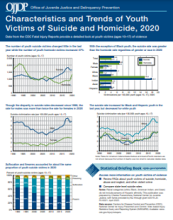Homicide victims
Women as Victims or Perpetrators of Homicide
Primary Group Characteristics and Intra-family Homicide
Responding to Intimate Partner Violence Related Strangulation Integrating Policy, Practice, and Rese
This webinar examines the problem of Intimate Partner Violence Strangulation and an innovative response policy. The presentation will include an overview of the nature and extent of strangulation, its dangers, and adverse medical consequences followed by a review of a Strangulation Ordinance in Burleson, Texas that mandates extensive training for first responders and a city-wide response protocol for strangulation detection and investigation, documentation of strangulation signs and symptoms, medical assistance, and service referrals for strangulation survivors.
See the YouTube Terms of Service and Google Privacy Policy
The Difference Between Living and Dying: Victim Characteristics and Motive Among Nonfatal Shootings and Gun Homicides
Postmortem CT Scans Supplement and Replace Full Autopsies
The Mortal Tragedy: Analyzing Body Disposal Patterns in Homicide Cases
Just Science Podcast: Just Identifying Gacy's Victims Part 2
Crime and Justice: A Review of Research, Volume 30
Characteristics and Trends of Youth Victims of Suicide and Homicide, 2020
Public cooperation and the police: Do calls-for-service increase after homicides?
Validation of a Confirmatory Proteomic Mass Spectrometry Body Fluid Assay for Use in Publicly Funded Forensic Laboratories
Advancing Understanding, and Informing Prevention of Public Mass Shootings: Findings from NIJ Funded Studies, Part 1
In recent years, NIJ invested in several research projects to advance understanding and inform prevention of public mass shootings.
See the YouTube Terms of Service and Google Privacy Policy




